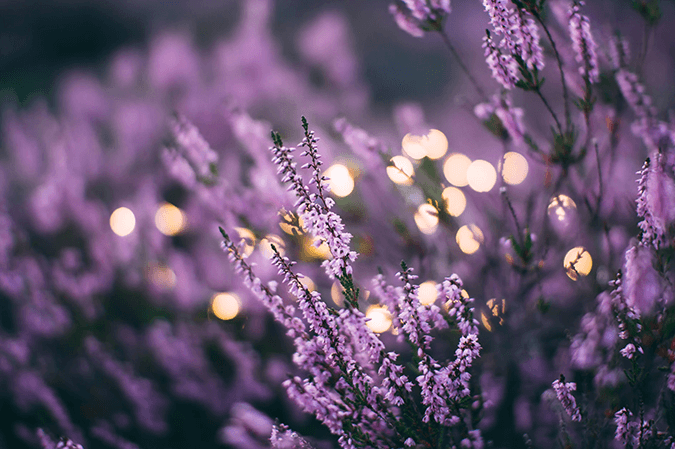Description
Lavender is a genus of flowering plants in the mint family, Lamiaceae, comprising around 47 known species. The most commonly cultivated species is Lavandula angustifolia, also known as English lavender. Lavender is native to the Mediterranean region but is now widely grown across the world for its fragrant flowers, essential oil, and ornamental beauty. The plant is characterized by its aromatic, narrow leaves and spikes of small, purple flowers that bloom in late spring to early summer.
Common Features
- Leaves: Lavender leaves are narrow, lance-shaped, and typically gray-green in color. They are covered with fine hairs that give them a slightly silvery appearance and contribute to their fragrant aroma.
- Flowers: Lavender flowers are small and tubular, arranged in dense spikes at the top of long, slender stems. The flowers are most commonly purple or blue, though some species produce pink, white, or pale yellow blooms. Lavender flowers are highly aromatic, with a sweet, calming fragrance.
- Growth Habit: Lavender plants are woody shrubs that can grow between 1 to 3 feet in height, depending on the species and growing conditions. They have a bushy form with multiple stems arising from the base.
- Aroma: Lavender is renowned for its soothing and calming scent, which is a key component in aromatherapy and perfumery.
Role in the Ecosystem
- Pollination: Lavender is an excellent plant for attracting pollinators, particularly bees and butterflies. The flowers’ nectar is a valuable food source for these insects, especially in the summer when they are in bloom. Lavender is often included in pollinator-friendly gardens for this reason.
- Habitat: Lavender provides habitat and shelter for various insects. The dense foliage and sturdy stems offer protection to beneficial insects such as ladybugs, which help control garden pests.
- Soil Improvement: While lavender prefers well-drained, poor soils, it can contribute to soil health by attracting a diversity of soil organisms. Its deep root system helps stabilize the soil, reducing erosion in areas with loose or sandy soils.
Importance
- Cultural Significance: Lavender has been used for centuries in various cultures for its medicinal, culinary, and aromatic properties. It is commonly associated with calmness, purity, and cleanliness. In ancient times, it was used in baths and perfumes, and its name derives from the Latin “lavare,” meaning “to wash.”
- Medicinal Uses: Lavender is widely used in herbal medicine for its calming and anti-inflammatory properties. The essential oil extracted from lavender flowers is commonly used in aromatherapy to reduce stress, anxiety, and insomnia. It is also applied topically for treating burns, insect bites, and minor skin irritations due to its antiseptic properties.
- Culinary Uses: While not as commonly used as other herbs, lavender has culinary applications, particularly in French cuisine. The flowers and leaves are used to flavor dishes, desserts, and beverages. Lavender is also a component of the classic herb blend Herbes de Provence.
- Ornamental Value: Lavender is a popular ornamental plant in gardens worldwide, prized for its beautiful flowers and pleasant scent. It is often used in borders, rock gardens, and as a ground cover. Lavender is also commonly grown in pots and containers for its decorative appeal.
- Economic Importance: Lavender is a significant crop in the production of essential oils, particularly in regions like Provence, France. Lavender oil is a key ingredient in perfumes, cosmetics, and personal care products. The dried flowers are used in sachets, potpourri, and crafts.
Sources
- Royal Horticultural Society. (n.d.). Lavandula (Lavender) – Plant Finder. Retrieved from RHS
- Encyclopedia Britannica. (n.d.). Lavender | Description, Plant, Uses, & Facts. Retrieved from Encyclopedia Britannica
- National Institutes of Health (NIH). (n.d.). Lavender – An Overview of its Medicinal Uses. Retrieved from NIH
- University of Maryland Medical Center. (n.d.). Lavender – Herbal Medicine Overview. Retrieved from UMMC



